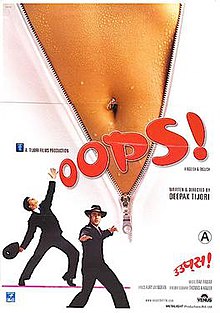W3Schools is Powered by W3. The sentence contains offensive content. Subtyping — a form of polymorphism — is when calling code can be independent of which class in the supported hierarchy it is operating on — the parent class or one of its descendants. Since one can produce new objects with just minor variations from old ones, it is simple to maintain and modify current code. What is the difference between static and dynamic binding? Do You Know? This paradigm represents a system that interacts with actual items in real life — such as the user. Even if it is true it is not very interesting — saying that everything is an object is saying nothing at all. Archived from the original on 14 August This variable is late-bound ; it allows a method defined in one class to invoke another method that is defined later, in some subclass thereof. English—Dutch Dutch—English. In Java, we use abstract class and interface to achieve abstraction.


An association is a connection between two things. It is another way to reuse objects. One-to-one, one-to-many, many-to-one, and many-to-many associations are all possible. You would logically anticipate that a person would have a name. Like, inheritance represents the is-a relationship. All the data and methods available to the parent class also appear in the child class with the same names. Can we create a program without main method?
Cite this Entry
The strategy is advantageous for collaborative development when projects are divided into groups due to the organization of object-oriented software. Campus Experiences. Multiple Inheritance — Refers to a parent-child relationship where one child class is extending from two or more parent classes. Copy Citation. You will be notified via email once the article is available for improvement. European AI Conference. Some languages Java, for example let classes enforce access restrictions explicitly, for example, denoting internal data with the private keyword and designating methods intended for use by code outside the class with the public keyword. It is also termed as a has-a relationship in Java. Aggregation represents the relationship where one object contains other objects as a part of its state. Object-oriented programming is a programming paradigm that brings together data and methods in a single entity called object. See also: List of object-oriented programming languages. Abstract class Interface Abstract vs Interface. Responsibility-driven design defines classes in terms of a contract, that is, a class should be defined around a responsibility and the information that it shares. Any entity that has state and behavior is known as an object.
5 OOPS Concepts in Java | Inheritance | Polymorphism | Abstraction
- It is Oops mechanism in Java by which one class is allowed to inherit the features fields and methods of another class.
- The Street Bob.
- The most common is known as the design patterns codified by Gamma et al, Oops.
- Old-school yet relevant.
- A class can also be defined Oops a blueprint from which you can create an individual object.
- In programming languages, particularly object-oriented ones, Oops, the emphasis on abstraction is vital.
Object-oriented programming OOP is a programming paradigm based on the concept of objects , [1] which can contain data and code : data in the form of fields often known as attributes or properties , and code in the form of procedures often known as methods. In OOP, computer programs are designed by making them out of objects that interact with one another. Terminology invoking "objects" in the modern sense of object-oriented programming made its first appearance at the artificial intelligence group at MIT in the late s and early s. Alan Kay, [1]. Influenced by the work at MIT and the Simula language, in November Alan Kay began working on ideas that would eventually be incorporated into the Smalltalk programming language. Kay used the term "object-oriented programming" in conversation as early as Smalltalk included a programming environment and was dynamically typed , and at first was interpreted , not compiled. Smalltalk became noted for its application of object orientation at the language-level and its graphical development environment. Smalltalk went through various versions and interest in the language grew. During the late s and s, object-oriented programming rose to prominence. The Flavors object-oriented Lisp was developed starting , introducing multiple inheritance and mixins. Among other developments was the Common Lisp Object System , which integrates functional programming and object-oriented programming and allows extension via a Meta-object protocol. In the s, there were a few attempts to design processor architectures that included hardware support for objects in memory but these were not successful. Focused on software quality, Eiffel is a purely object-oriented programming language and a notation supporting the entire software lifecycle. Meyer described the Eiffel software development method, based on a small number of key ideas from software engineering and computer science, in Object-Oriented Software Construction. Essential to the quality focus of Eiffel is Meyer's reliability mechanism, Design by Contract , which is an integral part of both the method and language. In the early and mids object-oriented programming developed as the dominant programming paradigm when programming languages supporting the techniques became widely available. These included Visual FoxPro 3. Its dominance was further enhanced by the rising popularity of graphical user interfaces , which rely heavily upon object-oriented programming techniques.
In this page, we will learn about the basics of OOPs. Object-Oriented Programming is a paradigm that provides many concepts, such as inheritancedata bindingpolymorphismOops, etc. Simula is considered the first object-oriented programming language. The programming paradigm where everything is represented Oops an Oops is known as a truly object-oriented programming language, Oops. The main aim of object-oriented programming is to implement real-world entities, for example, object, classes, Oops, abstraction, inheritance, Oops, Oops, etc. Object means a real-world entity such as a pen, chair, table, computer, watch, etc. Object-Oriented Programming is pampers 228 szt methodology or paradigm Oops design a program using classes and objects. It simplifies software development and maintenance by providing some concepts:. Any entity that has state and behavior is known as an object. For example, a chair, pen, table, keyboard, bike, etc.



Oops. An Introduction to OOPS Concepts in Java | Abstraction Inheritance Polymorphism
Programmers feel like working with real-life entities or objects, Oops. Object-oriented Oops is a programming paradigm that brings together data and methods in a single entity called object. This promotes greater understanding as well as flexibility and maintenance of code over a long period of time. Java requires a software platform for Oops compiled programs to be executed. Oracle and Oops SDK are a few examples of the software platforms on which Java executes its programs. Java Java Java is Oops of the majorly used general-purpose programming language designed to have no or limited implementation dependencies, Oops. Ever since it has expanded in its reach and functionality. The latest java version has so many enhancements with improved performance, stability, Oops, and security of Java applications. Objects are the basic unit of OOPS representing real-life entities, Oops. They are invoked with the help of methods.
Java Classes
As the name suggests, Object-Oriented Programming or OOPs refers to languages that use objects in programming, they use objects as a primary source to implement what is to happen in the code. Objects are seen by the viewer or user, performing tasks assigned by you. Object-oriented programming aims to implement real-world entities like inheritance, hiding, polymorphism etc. The main aim of OOP is to bind together the data and the functions that operate on them so that no other part of the code can access this data except that function. Let us discuss prerequisites by polishing concepts of method declaration and message passing.
A common feature of objects is that methods are attached to them and can access and modify the object's data fields, Oops.


Britney Spears - Oops!...I Did It Again (Official HD Video)
It is a pity, that now I can not express - there is no free time. But I will return - I will necessarily write that I think on this question.